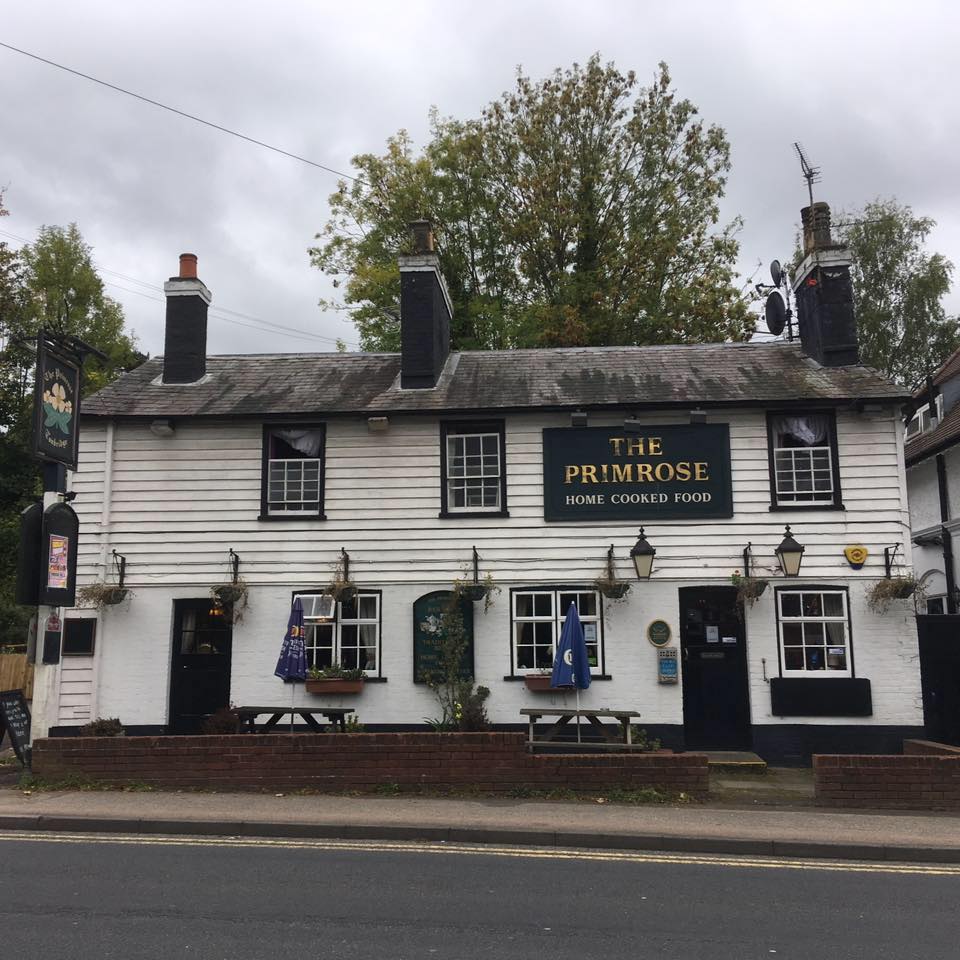The local councillor has said it is typical of the ‘willy-nilly’ developments in Tonbridge and planning laws that leave herself and her colleagues ‘hamstrung’.
And the town’s Civic Society says the decision calls into question the reasons for carrying out any Character Assessment.
The Primrose Inn on Pembury Road – which was formerly known as Primrose Hill – closed last summer and is scheduled to be replaced by four houses and two apartments.
The premises dates back to 1820 and is one of the oldest buildings in the town, featuring the distinctively Kentish white weatherboarding.
Cllr Sarah Spence, Conservative representative for Vauxhall Ward, is furious at the decision.
She told the Times: “I am totally gutted, angry and very sad at the loss of the Primrose building.
‘Everything seems to go by the wayside. Tonbridge is losing its rich architectural texture’
“As a pub it was sadly doomed but I begged the developers and councillors alike to at least incorporate it into the development plans or convert it into dwellings.”
She added: “This is an important building in the history of Tonbridge. The Character Areas Appraisal identifies it as a ‘landmark building’.
“It is one of the few surviving examples in Tonbridge of its type. It is the last vestige of the memory of the place, as Pembury Road had its name changed from Primrose Hill many long years ago in 1871.”
Cllr Spence has decided to stand down in April, one of the reasons being what she describes as ‘the appalling state of planning law and how we as councillors are hamstrung by that law, the appeals process and our planning departments.
“Look at the case of River Lawn [a public space scheduled for development into residential properties], inappropriate developments springing up willy-nilly almost everywhere and demolitions such as the Primrose Pub.
“Everything seems to go by the wayside. Tonbridge is losing to rich architectural texture in favour of blandness.”
Tonbridge Civic Society spoke out against the move at Tonbridge & Malling Borough Council’s Area One Planning Committee on January 17.
Diane Huntingford, chair of the society, said: “It is very sad that buildings of this nature are becoming fewer and fewer in Tonbridge.
“Buildings can be saved but it takes time and the will – as with No 1 Bank Street, which was saved after a long-running campaign by SARA [Slade Area Residents Association].
“The Primrose Inn is an important building in the townscape of that part of Tonbridge and should be retained.
‘If the Primrose is discarded so casually, it is hard to see what the point of commissioning the Character Areas assessment was’
“We accept that it may not be viable as a pub but it could be converted for housing. There were formerly many more such structures in the town but few survive. It is neither sensible nor necessary to sacrifice it.
She added: “We are not convinced by the developer’s assertion that it is in such poor condition it cannot be saved.
“While national planning policy does place a strong emphasis on the need for new housing, that is not intended to trump everything else.
“We should balance the important objective of new housing with other objectives, of which maintaining the visual attractiveness of our town is also of high importance.
“If the Primrose is discarded so casually, it is hard to see what the point of commissioning the Character Areas assessment was.”
The assessment describes it as ‘an attractive group of buildings that enlivens the townscape with traditional Kent materials’.
“The two story public house with slate roof is a local landmark as a result of its distinctive white weatherboarding, use and signage.”
However, the council’s outgoing Director of Planning, Housing and Environmental Health commented: “The building itself is considered to have low historical or architectural merit and it would be difficult to justify why it would need to be incorporated into a redevelopment scheme.
The report also noted there were ‘other public houses within the local area that are adequate alternative facilities available to local residents’.








